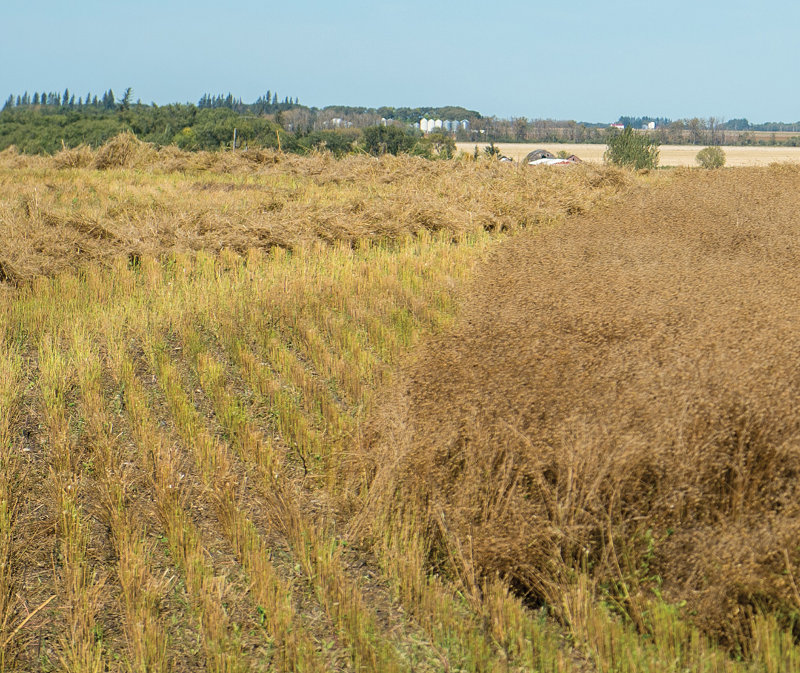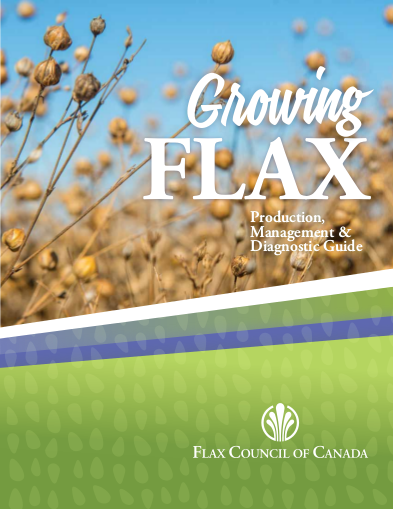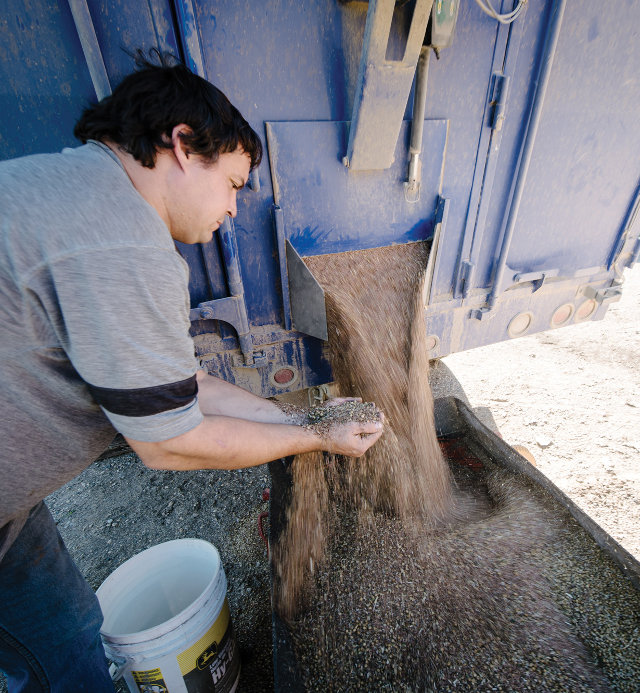Chapter 1: Crop Rotation
Chapter 1 – PDF version
Download the PDF version of ‘Chapter 1: Crop Rotation’.
Flax is adapted and fits well in crop rotations in all soil zones of the Canadian Prairies. Flax provides producers with an alternative to cereals (spring and winter wheat, barley and oats), other oilseeds (canola and mustard) and pulses (peas, lentils and soybean).
With adequate weed control, the major factors influencing the yield of flax are drought, excess soil moisture, plant density and heat stress. Due to its shallow rooting character, the top 70 cm of the flax root system is responsible for at least 95% of its water and nutrient requirements. Although lack of moisture usually limits flax yield, there is usually a carryover of nutrients and moisture for the next crop below the 70 cm soil depth. To get optimum returns from the addition of fertilizer, it is important to soil test and fertilize to reasonable yield targets. Medium to heavy textured fertile soils are ideal to achieve high flax yield. After growing flax, limited residue (straw) is left and this may increase the risk of soil loss from wind and water erosion. As such, flax should be followed by a cereal crop in the rotation.
Flax seed yield is susceptible to high temperatures during the critical flowering period.
Effect of Preceding Crops on Flax
Most research carried out on the Canadian prairies indicates that previous crop and cropping sequences have a significant impact on flax production and flax yield.
Effect of canola stubble on flax
Flax performs poorly on canola and mustard (Brassica) stubble compared to cereal or other broadleaf crop stubble, particularly in the presence of volunteer canola seedlings. The lower flax yield observed after canola may be attributed to the negative impact canola has on soil arbuscular mycorrhizae. Arbuscular mycorrhizae are important fungi for a restricted root system crop like flax, as they result in greater surface area for nutrient uptake. This is especially important for nutrients that are relatively immobile in the soil, such as phosphorus, copper and zinc.
Flax is sensitive to phytotoxic compounds released from canola residue (straw) degradation and this may result in reduced flax germination and seedling growth. Nitrogen and soil moisture depletion from canola is high compared to that of most other annual crops. This is especially critical during years of below average precipitation. Reduced soil moisture would be of particular concern in the more drought prone, semi-arid areas of the Prairies, where water availability tends to be lower and less reliable than in sub-humid areas.
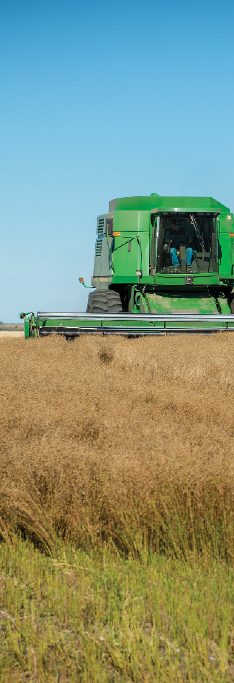
Production Tip
Rotate flax crops to prevent admixtures and minimize disease build‐up; only one year in four in oilseed flax is advisable.
Effect of flax stubble on flax
Generally, lowest yields and quality of most crops occur when seeding on its own stubble. This may be attributed to major plant pathogens affecting crop productivity. The rotation responsible for lowest yield in flax is flax sown on flax stubble. The second lowest yield of flax usually results from growing flax on canola/mustard stubble. Reduced productivity of flax on flax stubble may be due to;
- A build-up of soil pathogens (fusarium wilt and pasmo).
- A dry seed bed due to a reduced capacity of straw to trap snow and conserve moisture and/or depleted soil moisture reserves in the top 70 cm of the soil profile.
- Soil crusting after seeding in the spring, especially when heavy rains precede crop emergence. This is particularly an issue in heavy (clay) soils that have little trash coverage from the previous flax crop.
Effect of cereal stubble on flax
Research shows that flax sown on cereal stubble favours high yield in flax. Yields are higher when flax is sown on barley and wheat stubble versus oat stubble.
Effect of legume stubble on flax
Research indicates that flax sown on pea stubble has yield similar to flax sown on wheat and barley stubble. This may be partially related to soil moisture availability or the nitrogen benefit from the legume, or both. Recent research from North Dakota indicates that the greatest mean yield of flax occurred when flax was sown after legumes such as soybean, field peas or field beans. Flax grown on other legume stubble such as sweet clover and alfalfa had higher yield than after hay crops. Legumes, such as field peas, tend to use lower amounts of water compared to other annual crops. Field pea stubble results in greater nitrogen mineralization as pea roots with nitrogen fixing nodules degrade.
Effect of Flax on Subsequent Crops
Effect of flax stubble on cereals
Research conducted on the Canadian Prairies demonstrated that higher cereal yields (spring wheat, winter wheat and barley) are observed on flax stubble rather than wheat stubble. An important consideration for this yield advantage was excellent weed control when growing flax. Weedy flax fields use water less efficiently than weed-free flax crops and result in less soil moisture available for the following crop. In addition, since flax gets almost all of its moisture needs from the top 70 cm of the soil profile, deeper and more fibrous cereal crop roots can often use the moisture and fertility available beyond the 70 cm depth.
Crop sequence improves water efficiency in flax and cereals. In years of drought, cereals grown on cereal stubble had greater yields than on flax stubble. The major reason for this appears to be that wheat stubble provides increased capacity to trap snow and conserve critical soil moisture. Increased water efficiency in flax under reduced tillage has also been attributed to arbuscular mycorrhizae since reduced tillage encourages the persistence of arbuscular mycorrhizae. Therefore, during periods of drought, flax stubble appears to be a poor choice for cropping of cereals. Nevertheless, soil moisture conservation may be enhanced by a cereal-flax rotation instead of a cereal-canola, since the soil profile tends to be drier after canola.
Flax stubble breaks up cereal pathogen and insect population cycles. This usually reduces the prevalence of disease and insect pests during the cereal portion of the rotation.
Market News
Canada is the world’s leading exporter of flax seed
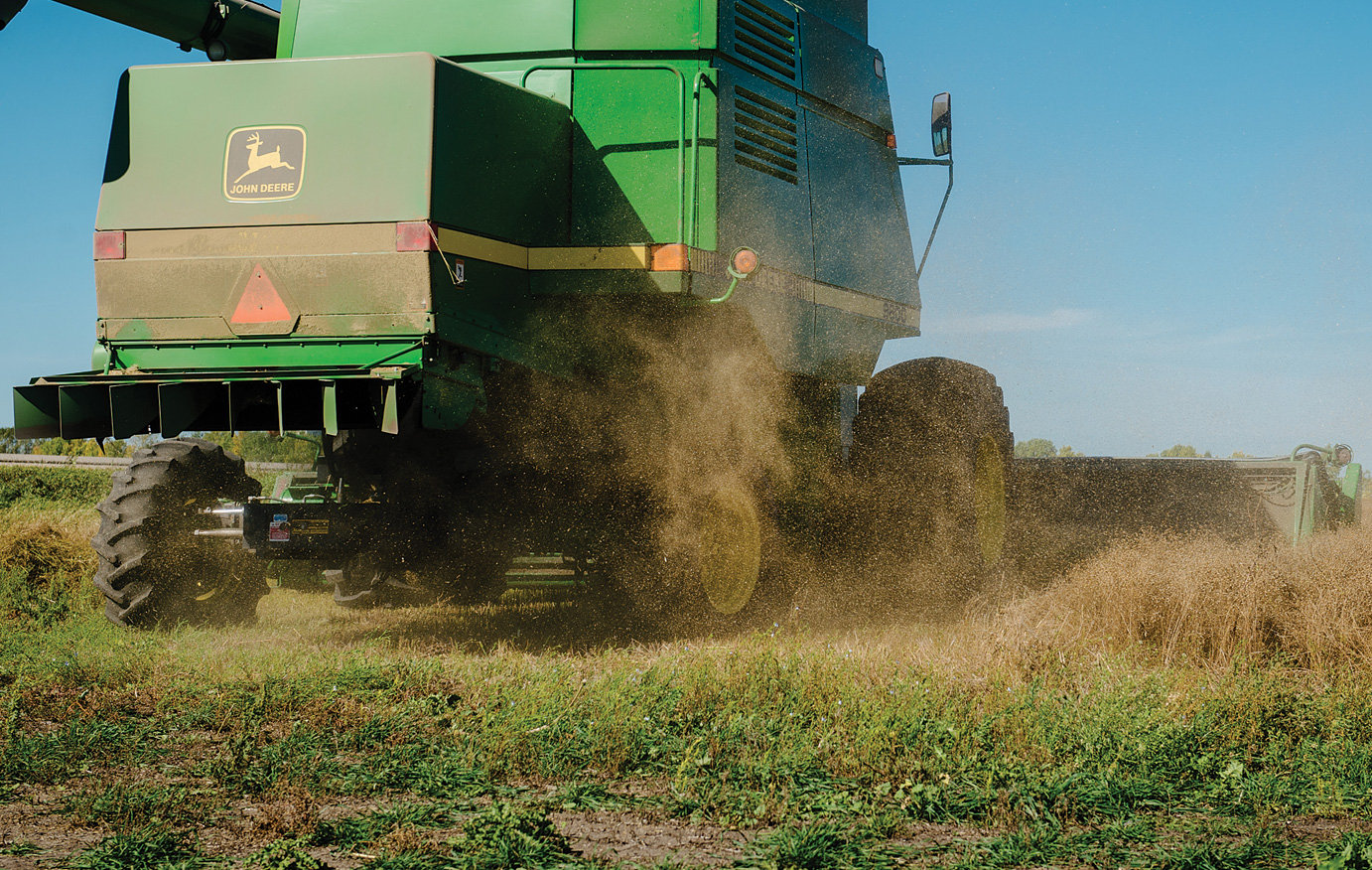
Effect of flax stubble on oilseed and legume crops
Canola grown on flax stubble produces higher yields than canola grown on canola stubble, except in a drought where yield is reduced. Higher yields were partially associated with reductions in blackleg incidence and severity, when canola was grown in rotations with flax and wheat, or with the inclusion of flax in diverse rotations (canola-wheat-flax-canola) with conventional and minimum tillage.
As flax is not favoured by many canola insect pests, it is a break in the cycle of these organisms. This may result in reduced populations of pests and an overall reduction of infestation.
Similarly, yield of peas was higher on flax stubble than on pea stubble except under drought conditions. Sowing peas on flax stubble did not reduce the severity of mycosphaerella in peas, as was the case for sowing peas on cereal stubble.
Flax may be beneficial to succeeding crops in semi-arid climates found on the Canadian prairies because it tends to deplete soil moisture less than other oilseeds such as sunflower, safflower and soybean. With regards to depleting soil moisture, flax is similar to wheat, canola, millet and chickpea.
